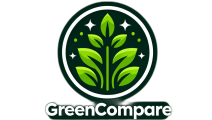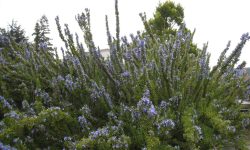Aerogarden Vs Hydroponics
Indoor gardening has become increasingly popular as people look for ways to grow fresh produce in their own homes. Two popular methods for indoor gardening are Aerogarden and hydroponics. Aerogarden is an innovative indoor gardening system that allows you to grow plants using a combination of water, nutrients, and a special LED lighting system. On the other hand, hydroponics is a soilless cultivation method that maximizes plant yield by delivering nutrients directly to the plant’s roots in a water-based solution. In this blog post, we will explore the key similarities and differences between Aerogarden and hydroponics, as well as factors to consider when choosing the right system for your indoor gardening needs. Whether you’re a beginner looking to start your indoor garden or an experienced gardener looking to try a new method, this comparison will help you make an informed decision.

Introduction to Aerogarden and Hydroponics
Aerogarden and hydroponics are both innovative indoor gardening systems that have gained popularity in recent years. These systems provide a unique way for individuals to grow their own fresh herbs, vegetables, and flowers right in the comfort of their own homes, without the need for traditional soil-based cultivation. Aerogarden is a soil-free, indoor gardening system that makes use of a combination of advanced hydroponic technology, automated lighting, and in-built timers to create the perfect growing environment for plants. On the other hand, hydroponics is a soilless cultivation technique that involves growing plants in water-based nutrients, without the use of soil.
Both Aerogarden and hydroponics offer several advantages over traditional soil-based gardening. They allow for faster growth, higher yields, and lesser maintenance, making them an attractive option for urban dwellers and individuals with limited outdoor space. Additionally, these systems provide a great way to bring nature indoors and add a touch of greenery to any living space.
While both Aerogarden and hydroponics share a common objective of providing an alternative to traditional gardening, they have unique features and operating principles that distinguish them from each other. Understanding the differences and similarities between the two systems can help individuals make an informed decision when choosing the right indoor gardening method for their needs.
For those who are new to indoor gardening, Aerogarden and hydroponics offer an exciting and accessible way to explore the world of plants and experience the joy of growing fresh produce right at home. As more people become interested in sustainable living and self-sufficiency, these innovative systems have the potential to play a significant role in the future of gardening.
Aerogarden: Innovative Indoor Gardening System
Aerogarden is an innovative indoor gardening system that allows individuals to grow plants, herbs, and vegetables year-round without the need for soil. This soilless cultivation method is becoming increasingly popular among those who want to have fresh produce at their fingertips, regardless of the season or outdoor conditions.
One of the key features of the Aerogarden is its use of hydroponics technology, which involves growing plants in a nutrient-rich water solution rather than traditional soil. This method not only maximizes growth and yield but also allows for faster growth and healthier plants.
With its compact size and sleek design, the Aerogarden can be easily integrated into any indoor space, from kitchens to living rooms. Its automated system provides optimal conditions for plant growth, including lighting, water, and nutrients, making it a hassle-free option for even the most inexperienced gardeners.
By incorporating technology and sustainability, the Aerogarden offers a convenient and eco-friendly way to enjoy the benefits of homegrown produce, making it a truly innovative indoor gardening system.
Hydroponics: Soilless Cultivation for Maximum Yield
Hydroponics is a method of growing plants without the use of traditional soil. Instead, nutrient-rich water is used to provide all of the necessary food for the plants. This innovative technique allows for maximum yield without the limitations of traditional gardening methods.
One of the key advantages of hydroponics is the ability to control the environment in which the plants are grown. This allows for optimal growing conditions at all times, leading to faster growth and increased yields. Additionally, since the system is soilless, there is a reduced risk of pests and diseases that are typically associated with traditional gardening.
Another benefit of hydroponics is the water conservation aspect. With traditional farming, a large amount of water is used, and much of it is wasted. However, with hydroponics, water can be recycled and reused, making it an eco-friendly option for cultivation.
Overall, the soilless cultivation of hydroponics allows for maximum yield and efficient use of resources, making it an attractive option for both commercial and home gardeners looking to produce a bountiful harvest.
Key Similarities and Differences between Aerogarden and Hydroponics
Aerogarden and hydroponics are both revolutionary methods of indoor gardening, allowing individuals to grow a wide variety of plants without using soil. However, there are several key differences between the two systems. One of the main differences is the method of nutrient delivery. In Aerogarden, nutrients are delivered via a nutrient solution that is pumped through the base of the plants. In hydroponics, plants are grown in a nutrient solution that is either continuously flowing past the roots or delivered in intervals using a timer-based system.
Another significant difference is the level of automation in the two systems. Aerogarden is designed to be a fully automated system, with built-in timers and light settings that are tailored to the needs of the plants. On the other hand, hydroponics systems often require more manual input, such as adjusting pH and nutrient levels, and monitoring water levels and flow rates.
Despite these differences, there are also several key similarities between the two systems. Both Aerogarden and hydroponics allow for faster plant growth and higher yields compared to traditional soil-based methods. Additionally, both systems can be used to grow a wide range of plants, from herbs and leafy greens to tomatoes and peppers.
Ultimately, the choice between Aerogarden and hydroponics will depend on the specific needs and preferences of the individual gardener. Those looking for a fully automated, hassle-free experience may prefer the Aerogarden, while those who enjoy the hands-on aspect of gardening may find hydroponics to be a more fulfilling option.
Choosing the Right System: Factors to Consider
Choosing the right gardening system can be a daunting task, especially when there are so many options available in the market. Whether you are a beginner or an experienced gardener, it is important to consider several factors before making a decision. One of the most important factors to consider is the space available in your home. If you live in a small apartment or a house with limited outdoor space, an Aerogarden might be the best option for you. On the other hand, if you have ample space and want to grow a large number of plants, hydroponics could be the better choice.
Another important factor to consider is the level of control you want over the growing environment. Aerogarden systems are more automated and require less maintenance, making them ideal for those with a busy lifestyle. Hydroponic systems, on the other hand, provide more control over the growing conditions, allowing you to customize the environment to suit the specific needs of your plants.
Cost is also an important consideration when choosing the right system. Aerogarden systems tend to be more affordable and require less initial investment compared to hydroponic systems, which require additional equipment such as grow lights, pumps, and reservoirs. However, hydroponic systems may provide a higher yield, making them more cost-effective in the long run.
Lastly, consider the types of plants you want to grow. Some plants thrive in Aerogarden systems, while others may require the more customizable growing conditions provided by hydroponics. By considering these factors, you can make an informed decision and choose the right system that best suits your needs and preferences.
Frequently Asked Questions
What is Aerogarden?
Aerogarden is an innovative indoor gardening system that allows you to grow plants without soil, using a unique combination of water, nutrients, and LED lighting.
What is Hydroponics?
Hydroponics is a soilless cultivation technique that involves growing plants in a nutrient-rich water solution, with the roots supported by an inert medium such as clay pellets or rock wool.
What are the key similarities between Aerogarden and Hydroponics?
Both Aerogarden and Hydroponics allow for the cultivation of plants without soil, offer control over nutrient levels, and enable year-round indoor gardening.
What are the key differences between Aerogarden and Hydroponics?
Aerogarden is a self-contained system with pre-seeded pods, while Hydroponics requires more setup and customization. Aerogarden is designed for small-scale, home use, while Hydroponics can be scaled up for larger operations.
What factors should be considered when choosing between Aerogarden and Hydroponics?
Factors to consider include space available, desired plant variety, level of hands-on involvement, and budget. Aerogarden may be ideal for beginners or those with limited space, while Hydroponics offers more customization and scalability.
What are the benefits of using Aerogarden?
Aerogarden provides a convenient, all-in-one solution for indoor gardening, with minimal maintenance and a wide variety of pre-seeded plant pods to choose from. It also uses energy-efficient LED lighting for plant growth.
What are the benefits of using Hydroponics?
Hydroponics offers greater flexibility and customization for plant cultivation, allowing for larger yields and the ability to tailor the nutrient solution to specific plant varieties. It can also be adapted for a range of growing environments.



